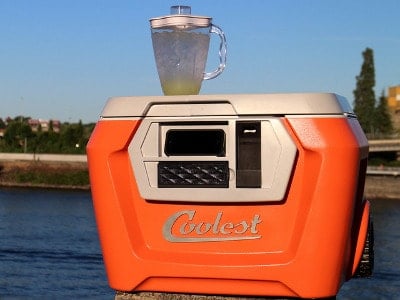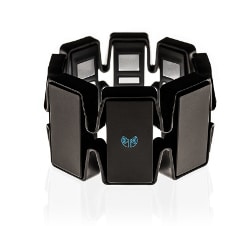
 As crowdfunding’s successes pile up over time, it’s inevitable that a bump in the road for a couple of high-profile campaigns, or simply people acting in bad faith, would eventually take some of the honeymoon shine off the entire enterprise in the mind of the public.
As crowdfunding’s successes pile up over time, it’s inevitable that a bump in the road for a couple of high-profile campaigns, or simply people acting in bad faith, would eventually take some of the honeymoon shine off the entire enterprise in the mind of the public.
Just as some people read headlines as a substitute for reading articles, allowing a single headline about a bad Über experience or an Airbnb “nightmare” to sway their judgement about those services, so it only takes one salacious headline about a “troubled” Kickstarter campaign to spin the subject in the media.
Some of these stories are legitimately horrible, like the now infamous saga of Toronto’s Tellspec, a startup peddling a crowdfunded food scanner, now reduced to threatening its critics, mainly the Pando Daily, with legal action if they continue to publicize the company’s inability to deliver the futuristic device they promised to backers who contributed $386,000 to their Indiegogo campaign.
So, with those horror stories making news, it might be worth taking stock of what’s behind those headlines before every crowdfunding story is tarred by the brush of a few bad actors. Is it all a scam? Or is crowdfunding experiencing the kind of growing pains you’d expect from any business that needs a spark of development to get going?
Last week, Ryan Grepper, the brain behind the Coolest Cooler, a motorized all-purpose outdoor cooler that makes drinks and stores food while keeping your cell phone charged, ran into a couple of simultaneous, unrelated problems that have threatened to blossom into a public relations disaster.
Namely, the campaign’s backers became irate when they discovered that a production delay caused by a strike undertaken by workers in the Chinese factory who produce the Coolest’s motor would push the delivery timeline back. That coupled with the fact that the Coolest was now available for $499 US on Amazon’s Launchpad platform, shipping sooner to customers who bought it over there while the project’s backers who paid $185 on Kickstarter were still waiting for their cooler to arrive, felt like a slap in the face.
Launchpad is Amazon’s outlet for “cutting edge products from startups”.
For backers of the Coolest, this all stinks. And many of them have taken to various platforms to make their displeasure known.
None of this would have been news if the Coolest Cooler wasn’t one of the highest grossing crowdfunding campaigns in history, attracting over $13 million from nearly 63,000 backers on a fairly modest initial campaign goal of $50,000.
But as bad as the optics can get around the business of overpromising and underdelivering, it would be far, far worse for Grepper to generate a different kind of headline as an American manufacturer pressuring Chinese workers to get the lead out and push production forward on his awesome party cooler.
In addressing his backers’ issues, which are basically short-term logistical problems that begin to create a larger PR problem as they pile up, Grepper’s approach has been concrete and direct.
Part of his learning process, too, has involved adjusting for tonal errors.
Last week, he justified the decision to sell the Coolest Cooler via Amazon’s Launchpad as the only way he could “keep the lights on,” which rubbed backers the wrong way.
And while many of his backers understand that a setback is a setback, many others aren’t interested in hearing his excuses.
“If you’ve ever opened up your own company, ever paid taxes, ever paid consultant fees, ever designed a product from scratch for a few hundred people and then had to scale it for mass production for more than 60,000 people, ever had every decision you make scrutinized by the masses, or ever offered something that ended up being more expensive to make than you sold it for, you can understand that we are not spending your money frivolously,” writes Grepper in a Kickstarter update addressing backers’ frustrations.
What Grepper is dealing with is the same type of pressures that confront the CEO of any mid-size manufacturing concern, with the added angst of having to constantly respond to backers via email and social media, update his blog, all while appeasing “people who are angry” and “have never fully appreciated the journey.”
“Some people who are angry have never fully appreciated the journey. They don’t know the story of me, my company, the Coolest manufacturing process, or Kickstarter, and those are the ones that bother me the most.” – Ryan Grepper
Indeed, if the original fundraising goal had been met and the Coolest hadn’t gone viral, Grepper would likely have shipped it to his original “few hundred” backers, who no doubt would now literally be the happiest campers on the planet.
Instead, he now has to travel to China to oversee the making of a quality product while also fielding the complaints of people who back a Kickstarter project the same way they shop for toothbrushes on Amazon.
For all of Grepper’s transparency about what for him is still a learning process in manufacturing and public relations, it’s a surprise (or is it?) that the comments underneath his latest Kickstarter update are so unsympathetic.
“What is the process to get a refund… I bought two… this is bull,” writes Clint Kramer.
“Ryan, really growing tired of your holier than now attitude,” writes Mark Rosinski before accusing Grepper of getting rich off his stolen money. “Quit whining and deliver wht was promised over a year ago? How much was your salary and bonus last year?”
A poster called Mike simply posts links to the Oregon Attorney General and encourages his fellow backers to “Let them do the heavy lifting.”
For that demographic, no amount of justification is going to satisfy a delay. They want the cooler they paid for right now, thanks. Christmas is coming, don’t you know.
One of the complicating factors around watching crowdfunding mature into a credible model for making projects happen is that people have become used to the paradigm of shopping online, which from the user perspective is almost identical to investing in a crowdfunding campaign.
Clicking “buy” seems almost identical to clicking “support”. As soon as you pay for something, the clock starts ticking until you have that thing in your hand.
Individual backers haven’t been trained to think of crowdfunding as a primitive form of venture capitalism. They think they’re making a straightforward purchase. And when their item doesn’t arrive, they get mad.
Next summer, when those same commenters venting their anger on the Coolest’s Kickstarter page are parked on the beach mixing a margarita in the Coolest’s on-board blender, some deep component of their lizard brain will be thinking, “What a goddamn rip off,” ruining an otherwise beautiful outing made even better by an amazing cooler.
In 2014, when Thalmic Labs found itself running about a year late releasing its Myo wristband, there were a few impatient rumblings herp-derping around the Internet.
Granted, the Myo wasn’t attached to a crowd-funding campaign, but Thalmic Labs had did take pre-orders through its website with a promise to deliver a product in late 2013.
 When the Myo finally arrived in June 2014, no one was left complaining, because the final product was so much sharper and better than anyone had been anticipating.
When the Myo finally arrived in June 2014, no one was left complaining, because the final product was so much sharper and better than anyone had been anticipating.
“The Myo Alpha units were based on the design we began showing a year ago when we first unveiled the Myo armband. But we decided we could deliver an even better product to our early adopters, so we made the decision to go ‘all in’ on the design we’re showing here today,” wrote Thalmic Labs on its blog upon the Myo’s release, fully justifying the decision to take a little extra time to get the product right.
“The new design, which uses a manufacturing process that we developed to encapsulate the electronics in rubber, is significantly more robust than the Myo Alpha units we had shown previously, pushing the limits of consumer electronics manufacturing.”
If things appear to be going badly for the Coolest right now, it may be worth keeping in mind that taking a chance on a crowdfunding campaign, or placing a pre-order for a product that won’t be immediately released, is a collaborative expression of faith in the dream of an entrepreneur to bring a particular project to fruition.
If you also get an awesome cooler out of the bargain, so much the better.
Comment
One thought on “Coolest Cooler growing pains reveal the ugly side of crowdfunding”
Leave a Reply
You must be logged in to post a comment.



 Share
Share Tweet
Tweet Share
Share




Free money! Just ask Ryan. You don’t even need to pay it back — he says so very clearly in this video:
https://www.youtube.com/watch?v=9t4EtzWSyZ8